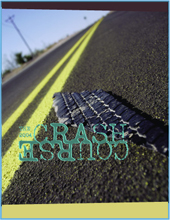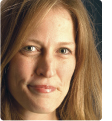
| Tracking Trends | |
| Finding Balance | |
| Collision Education | |
| All Parts Included | |
 |
 | ||||||||||||||||||||||||||||||||||||||||||||||||||||||||||||||||||||||||||||||||||||||||||||||||||||||||
| Tracking Trends. An up-to-date look at passenger auto claim frequency and new and used vehicle marketplace patterns | ||||||||||||||||||||||||||||||||||||||||||||||||||||||||||||||||||||||||||||||||||||||||||||||||||||||||
 By Susanna Gotsch By Susanna Gotsch | ||||||||||||||||||||||||||||||||||||||||||||||||||||||||||||||||||||||||||||||||||||||||||||||||||||||||
Each year CCC amalgamates its extensive CCC auto-physical damage data with information gathered from industry-specific publications and puts it into logical, comparative terms against the nation’s overall economic view. The result is Crash Course, a publication helping to shed some light on developing industry trends and the potential impact they may have. For this article, we look at two key trends coming out of 2004—the decline in private passenger auto claim frequency and the trends within the new and used vehicle marketplace (and the subsequent downstream impact on automobile repair and total loss costs)—to see if they are likely to continue through 2005 and beyond. Further Declines in Claim Frequency Industry analysts are predicting a combined ratio of 98.9 in 2005, up slightly from 2004. Paid claim frequency for private passenger, non-fleet auto insurance experienced a decline in 2004, and has been on the decline since 2002. According to the Q4 2004 Fast Track reports on private passenger automobiles for full calendar year 2004 versus 2003, paid claim frequency for collision losses declined 4.5%, property damage liability frequency declined 2.1% and comprehensive frequency declined 8.3%.[4] Of particular interest is that the percentage change in earned vehicle years for collision and comprehensive (i.e., the number of vehicles carrying each line of coverage) appears to be reversing course. From 2003 to mid-2004 the number had been on the decline, but has been increasing at about 0.3% per quarter since.[5] What this may suggest is that consumers opting not to carry all lines of coverage on their vehicles during a softer economy when rates were higher may now be re-adding coverage.In 2004, both insurers and repairers reported lower claim frequency and repair volumes. This trend—carried over from 2003—is leaving industry leaders looking for explanations regarding the decline. Different theories include the growing ratio of vehicles to drivers, average annual miles driven, an aging population and higher deductible levels translating to fewer reported claims. Data collected by the National Safety Council would also suggest there are fewer accidents. Results published in their annual study “Injury Facts” for the past 10 years would seem to support that there has been a decrease in both the motor-vehicle accident frequency per licensed driver in the US, and in the accident frequency per registered vehicle in the US. Vehicle Marketplace The average rates for a vehicle loan continues to rise as the US Federal Reserve has continued to raise interest rates. Average rates for a vehicle loan have also risen, increasing the demand for leasing. New vehicle leasing accounted for 33% of all new vehicle sales in 2001; this dropped to 23% in 2002 and just over 21% in 2004. New vehicle leases in 2005, however, are expected to increase to 23.6%.[7] Declining lease volumes—coupled with higher used vehicle demands—are primary factors that are lifting wholesale used vehicle prices to their 2002 levels following a three-year slide (mid-2000 through May 2003).[8] And though leases have started to increase again, these vehicles are not expected to drive up off-lease volume until 2008.[9] Subsequently, used vehicle prices are expected to see further moderate increases in the coming months. It was supposed to be the “Year of the Car” in 2004: while manufacturers introduced numerous new car models, 54.5% of new vehicle purchasers bought a light truck. Light truck popularity may have reached a plateau however, as higher gas prices may cause consumers to reconsider a light truck purchase. Light trucks made up 52.7% of all new vehicle sales year-to-date 2004 through May, which is a drop from the previous year. Two-thirds of US adults surveyed in a recent Harris Interactive poll expect gas prices will be higher at the end of the summer than they are now, and only 11% expecting lower prices.[10] Vehicle Repair Costs A data comparison of the first quarters of 2003, 2004 and 2005 underscore some of the key shifts in vehicle mix further discussed in The 2004 Crash Course. Light trucks (specifically SUVs) experienced further growth in the mix of repairable vehicles, as did non-domestic, younger and luxury vehicles. And while the increase in average repair cost slowed between 2003 and 2004, the 2.4% increase between Q2 2004 and Q2 2005 results are more in line with the previous year’s increases.
A key issue discussed in The 2004 Crash Course was the increasing percentage of vehicles flagged as non-repairable, or total loss. Slightly more than 13% of vehicles for which an appraisal is generated were flagged as total loss in 2004—this does not include vehicles that were obvious totals and for which no damage appraisal was generated. Several insurers have reported total loss percentages upward of 15 to 25%. The percentage of appraisals flagged as total loss by the end of Q1 2005 had increased further, reaching 13.5%. The average cost to repair a vehicle in 2004 was $2,270, while the average total loss vehicle valuation amount was at $6,448. The National Safety Council estimates that there were approximately 20 million vehicles involved in motor vehicle accidents in 2003.[11] If 15% of these were totaled in 2003 and grew to 16.5% in 2004, the additional cost to the industry would be nearly $1.2 billion, or slightly more than $60 per vehicle. Declining claim frequency has translated to fewer repairs for the collision repair industry—a situation further aggravated by the increase in the percentage of vehicles deemed non-repairable or total loss. With more vehicles totaled, the overall cost to the industry for private passenger auto claims increased in 2004 despite a drop in claim frequency. With total loss frequency increasing, the impact becomes more significant as total loss values continue to rise as well. The average total loss value had been on the decline from 2001 through 2004, although the rate of decline had slowed. Comparison of the year-to-date through May values for 2003, 2004, and 2005 show a significant shift in average costs moving into 2005.
Increasing total loss percentage was cited as one of four critical concerns facing the collision repair industry at the 2004 International Bodyshop Industry Symposium (IBIS) held in Montreaux, Switzerland. The other three concerns cited were: (a) diversity of design driving increasingly complex repair procedures; (b) declining accident rates; and (c) supply chain profit pressures.[12] Expanded use of materials, such as ultra-high strength steels and aluminum alloys, new joining technologies such as adhesive bonding, and new welding technologies are making repairs increasingly complex and may force the industry to greater specialization. Most—if not all—of these also impact how a vehicle is repaired, what it will cost to repair and to an extent whether it makes sense or not from an economic perspective to repair it at all. The Cost of Increasing Vehicle Complexity A recent study focusing on emerging technologies shows that after price consideration consumers ranked side-impact air bags, run-flat tires, laminated door glass, stability control and premium surround sound among the top five high-tech features for “definite” and “probable” interest.[14] And while certain electronic devices have proven beneficial to consumers and manufacturers alike—i.e. electronic stability control, side-impact air bags, “black-box” technology and electrical components replacing heavier mechanical parts (parking brakes, and steering components), others have yet been proven in real-life experience. Another consideration is how well the new devices can counter statistics such as: a 100% increase in 2004 in the number of drivers on the road holding cell phones to their ears (5%, up from 4% in 2002 and 3% in 2000);[15] the 60% of adults driving while drowsy, with 4% of them having an accident or near-accident because they were too tired.[16] The risk of an accident quadruples when driving while talking on a mobile phone—a rate similar to that of drunk driving—according to a study by the New England Journal of Medicine.[17] In some cases, drivers may be simply unfit to drive. A recent study of 5,000 licensed drivers nationwide conducted by GMAC Insurance showed that nearly one in 10 drivers would fail a state drivers test if tested today.[18] Perhaps an even bigger factor impacting vehicle repair is the proliferation of new models and the redesign of older models. According to research conducted by Prudential Equity Group LLC, all-new or redesigned vehicles will replace 93% of Toyota’s North American sales volume by 2007: The numbers are similar for Honda and Nissan’s sales numbers (108% and 134%, respectively). Even GM, Ford and Chrysler are expected to see 86, 73 and 79% of its sales come from new products in that timeframe.[19] Summary With claim frequency on the decline in the last six to seven quarters, the effect of increases in vehicle repair costs due to the increasing complexity of vehicles on the road today has been less than it might have been; with more vehicles totaled each year, however, the cost per claim overall is driven up quickly. A higher total loss percentage impacts the collision repair industry as well, translating to fewer overall repair jobs. If the fourth quarter ’04 up-tick in earned vehicle years is truly an indication that consumers are re-electing to carry all lines of coverage on a vehicle since premiums are lower, the industry could see some reversal in claim frequency. But in general, with conditions such as an older driving population and more vehicles than drivers, it’s unlikely that claim frequency will reverse course with any significance. Susanna Gotsch is director of analysis and reporting at CCC Information Service Inc. and author of Crash Course.
|